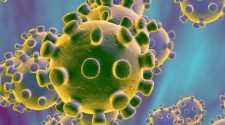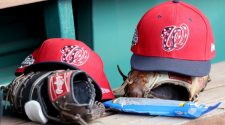Tyler O’Neill and Harrison Bader have both struggled against breaking balls throughout their careers. O’Neill posted wOBAs against breaking balls of .170 in 2018, .178 in 2019, and .266 in 2020. It has been a similar story for Bader who has posted wOBAs against breaking balls of .241 in 2018, .158 in 2019, and .270 in 2020. After struggling the last few season, the St. Louis Cardinals duo appears to have improved against breaking balls this season, although it is still early.
Tyler O’Neill has done most of his damage this season against breaking balls. The outfielder has batted .294 with a .735 slugging percentage against these pitches. He has also hit five of his eight home runs against breaking balls. That is good for a .442 wOBA. Additionally, O’Neill’s xwOBA against the pitch group is even higher at .461 and with his average exit velocity of 92.7 mph, it is clear that O’Neill has been able to crush breaking balls this season.
Harrison Bader has also done most of his damage against breaking pitches this season as he is batting .391 with a .783 slugging percentage against these pitches. He has also hit three of his four home runs this season against breaking pitches, contributing to his .479 wOBA against the pitch group. Even though his xwOBA is much lower at .367, it is still solid and would represent a big improvement if Bader is able to maintain this success over the course of the season.
In previous seasons it had become clear how opposing pitchers should target O’Neill and Bader. In 2020, over 41% of the pitches that O’Neill saw were breaking balls. It was a similar story for Bader, who has seen the percentage of breaking balls thrown to him increase every season, as just over 38% of the pitches thrown to Bader last season were breaking balls.
Since they are facing so many breaking balls, it is clear that it will be difficult for either of them to become good MLB hitters unless they can become good breaking ball hitters. Even though it is still early as O’Neill has seen 129 breaking balls this season and Bader has seen 99, these strong results are encouraging.
Even though they have hit these pitches well, they have not lowered their whiff rates against the pitch group. O’Neill has slightly lowered his whiff rate to 38.6%, but that is still near his 40.2% whiff rate against breaking pitches last season. Additionally, Bader’s whiff rate of 37.5% is right around his career average. Despite this, the outfield duo is having success against these pitches because when they do hit the ball, they make strong contact.
This is a notable improvement for a pair of hitters who have always shown promise but have never been able to be consistently good hitters. Part of the problem is that their inability to hit breaking pitches meant that they needed to consistently crush fastballs. These hitters have been good fastball hitters throughout their careers, but it is difficult to hit fastballs so well that a hitter’s poor results against other pitches do not matter.
Being able to hit breaking pitches will allow O’Neill and Bader to be consistently good hitters. It will make it more difficult for pitchers to pitch against them, and it will force pitchers to throw them fastballs. When paired with their speed and defensive abilities, this makes for a valuable improvement. Now, O’Neill and Bader just need to show that they can maintain their improvements against breaking pitches over the course of the entire season.














